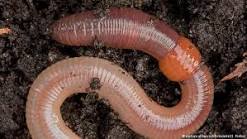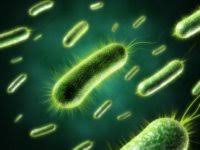COMPOSTING FOR AGRICULTURAL USE (part two)
Composting, as it were, is an age long activity as explained in part one of this article. We will be presenting the Science of composting as well as other vital areas
Read on.
The research into knowing the beneficial difference between thecompostas manure and plant matteras manure started somewhere in 1905 by Sir Albert Howard .jpg) The British Agronomist went to India 1905 and spent almost 30 years making experiment with organic gardening and farming.
The British Agronomist went to India 1905 and spent almost 30 years making experiment with organic gardening and farming.
He found out that the best compost consisted of three times as much plant matter as manure with materials initially layered in sandwich fashion, and then turned during decomposition ( called Indore method). Thereafter, he (Sir Howard), based on his work, published a book titled Agriculture Testament in 1943.
This book garnered and renewed interest in organic methods of agriculture thereby earning him the recognition as the modern day father of organic farming and gardening
Further Research
In furtherance to Sir Howard's work, J. I. Rodale .jpg) introduced many other gardeners to the value of composting for improved soil quality. Additionally, he established a farming research center in Pennsylvania and published a monthly Organic Gardening magazine.
introduced many other gardeners to the value of composting for improved soil quality. Additionally, he established a farming research center in Pennsylvania and published a monthly Organic Gardening magazine.
Compost Ignorance by our Ancestors
Our ancestors didn't realize that compost was very helpful for growing plants/crops and improving soil health, they didn't know how or why it worked.
Our knowledge about SCIENCE of composting comes from research conducted during the past fifty years (relatively compared to the 2000 years that humans have been composting).
Backyard composting empirically speeds up the decomposition and providing optimum condition for the organic matter to break down more quickly.
The microorganisms in a compost pile
These elements, such as actinomycetes, bacteria, mold and fungi account for most of the decomposition that takes place in a pile.
They are considered chemical decomposers ( microorganisms) because they change the chemistry of organic wastes and are responsible for the pleasant earthy smell of the compost. The larger decomposers (microorganisms) in a compost pile include sow, bugs, snails, millipedes, springtails, mites, spiders slugs, ants, earthworms, rotifers etc. These are considered physical decomposers because they grind, tear, bite, suck and chew materials into smaller pieces.
Most important of these larger decomposers is the earthworms because they ingest organic matter and digest it with the help of tiny stones in their gizzards .jpg)
.jpg) Their intestinal juices are rich in hormones, enzymes and other fermenting substances that continue to the break down process.
Their intestinal juices are rich in hormones, enzymes and other fermenting substances that continue to the break down process.
Aerobic Bacteria
.jpg)
The Research shows empirically that of all these organisms Aerobic Bacteria are the most important decomposers. They are numerously abundant and can be numbered in millions in just a gram of soil or decaying organic matter. Also they are the most nutritiously diverse of all organisms because they can eat nearly anything.
Their source of energy
Bacteria utilize carbon as their source of energy to keep them eating, while utilising nitrogen to build protein in their bodies for growth and reproduction.
Heating up the Compost
They (bacteria) obtain energy by oxidizing organic material, especially the carbon fraction. By this process (ie oxidation) the compost pile gets heaten up from the ambient air temperature.
Temperature of the Pile
The maximum temperature of the pile is 140'F after which many decomposers are killed or become inactive. If pile temperature exceed 160'F action should be taken to cool the pile by turning it.
In composting, there are factors that affect the process and there are materials to be used.
I shall discuss these in part three, being the concluding part of this article coming up next.
Watch out.
Regards,
From the desk of Udu Ben
great post